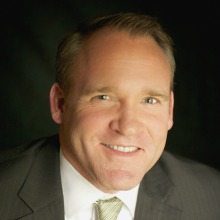
Jesse O’Gorman comes to Blackstone Technology Group with more than 15 years of experience in sales, operations, and project management. Currently, he serves as Partner and Executive Director, leading the company’s Federal Practice and Washington D.C. operations. Prior to joining Blackstone in September 2002, O’Gorman was President of iCynergy.
O’Gorman spoke with WashingtonExec about how he got into the business, why Blackstone, how the federal IT industry will fare this year, growth as dependent on company size, and more, including company beginnings in California.
“I’ve been in the IT services and software industry for close to seventeen years now,” Jesse O’Gorman said. “I began two technology start-ups in California before moving to the DC area in 2001. I actually met the founders of Blackstone while living in San Francisco.
In 2002, after about a year of working in the federal sector, I talked with Blackstone about forming a vertical focused on federal consulting. At the time the company solely focused on commercial clients. I stood up the federal practice out of my apartment in Arlington in 2002 and then worked with the leadership out of our San Francisco office to grow the business over the last ten years. Federal is now roughly 65 percent of the company business.”
And with the federal market constantly changing, it begged the question on how it might do this year, which has been penned with so much uncertainty.
“I feel 2013 is going to be very challenging for many, and I’m already seeing the impact,” O’Gorman said. “Everyone is talking about budget issues and procurement policy. There are just less procurements coming out for this time of the year and it’s pretty noticeable. Contract award decisions are also taking longer than we are used to seeing.
________________________________________________________________________________________________
“Overall I believe we’ll continue to see opportunity related to IT consolidation and business process automation initiatives, as well as procurement activity in areas like Health and Homeland.”
________________________________________________________________________________________________
So how does this affect companies of different size? O’Gorman compared company size/growth to the federal market with a sports-related analogy, saying,
“To me, it is like being in a highly competitive football division in high school where you have a hard time fielding a team and everyone has to play offense and defense. As a midsized business, which we’ve been since 2007, it reminds me of those days in football where we just need to remain flexible and play different roles, meet customer needs, and continually evolve our organization to scale the business.
We don’t have all of the same support mechanisms as some of those small and large businesses do. For example, without access to the government set asides or a long list of agency vehicles – it just makes it tougher to compete. Our focus is really on strong relationships, solution sales approach, and teamwork.”
But he agreed that it’s harder for a company to grow as a mid-sized business because they are “always in more of a challenging position than the small and large, especially now with the budgets tightening and small business contracting being a key focus, both prime and subcontracting.”
O’Gorman expanded his point, saying, “there are just less options without the set asides or the multi-year contracts. At the same time, some businesses in the midsized category might find the market to be just right. Some I’ve talked to (including ourselves) are in a position where they’ve made the right investments in people and solutions, their approach is flexible so they can adjust to these changes, and they don’t have the funding constraints that some of the small businesses or the overhead constraints of the large do.”
And as far as the next big thing in federal IT goes, O’Gorman says that while there are “disruptive technologies coming into the market pretty fast right now in areas like cloud, mobile, big data,” open source technology is the next hurdle.
“It’s not new to federal, but with the changes in its perception in the past several years with the current administration and the budget challenges we are seeing, it’s really coming to market faster than anything else,” O’Gorman said. “The initial investment is lower, the licensing agreements are not as complex, and contractors can train employees faster and cheaper so that’s kind of what we are seeing from where we sit.”
O’Gorman, who said his leadership style is a mix of providing “positive energy and direction on a regular basis,” also accounted for allowing “autonomy and creativity.”
_________________________________________________________________________________________________
“I can be hands off when it comes to the day-to-day management but very hands on when it comes to taking on new initiatives and the execution of priority business issues,” O’Gorman explained.
_________________________________________________________________________________________________
In fact, O’Gorman said that what Blackstone prides itself in is its corporate culture.
“We have a very dynamic work hard, play hard culture where folks have a ton of energy and ownership. It is really what sets us apart from our partners, similar to that is really just the loyalty and trust of an organization. For example I recently had a headhunter who knows the federal market very well and she told me that she rarely sees Blackstone employees looking out in the market—and she talks to a lot of the competitors. It was an interesting comment but it really shows that we do have that type of loyalty in the organization.”
So what might most people not know about Jesse O’Gorman? For one, he used to build and remodel houses. He also used to remodel wineries in Napa Valley.
“It’s a hobby now,” O’Gorman confessed. “I don’t do it for a living any longer but now I do small projects here in Arlington that are more investments, but they are still remodels and different types of construction projects.”


